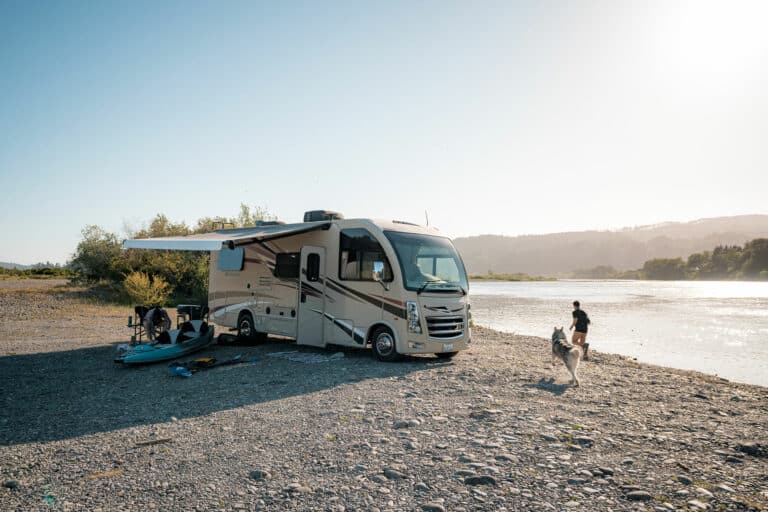Audubon Naturalist Society: The largest and oldest independent environmental organization in the D.C. region, the Audubon Naturalist Society fosters stewardship of the region’s environment by educating citizens about the natural world, promoting conservation of biodiversity, and protecting wildlife habitat. www.audubonnaturalist.org.
American Whitewater: Western North Carolina-based American Whitewater works to conserve and restore whitewater river resources by eliminating water degradation, improving public land management, restoring rivers dewatered by hydropower dams, and protecting public access to rivers for responsible recreational use. www.americanwhitewater.org.
WESTERN NORTH CAROLINA ALLIANCE: The Alliance protects national forests and parks from abusive commercial logging and development by searching out the last old-growth forests, opposing the proliferation of high-capacity chip mills that encourage clearcutting and pine plantations, and promoting ecological forestry on private lands. www.wnca.org.
Southern Environmental Law Center: In a tough political climate the SELC uses the law to defend the South’s water, air, and wild public lands from the mountains to the wetlands to the coast. With three offices in Charlottesville, Chapel Hill, and Atlanta, the devoted network of attorneys takes independent action and provides legal strategy to environmental groups in six southern states. “We will not accept unhealthy air, polluted water, poorly planned growth, and the decline of our natural treasures,” says SELC founder and executive director Rick Middleton. www.southernenvironment.org.
Southern Appalachian Forest Coalition: Comprised of 22 conservation groups in the South, the SAFC works to address the increasing threats facing Southern Appalachian public lands, including the need to improve management of the 4.6 million acres of public land in the region and add acres to our protected landscape. Current efforts focus on the getting the Roadless Area Conservation Act of 2005 and fighting the Bush administration’s recent proposal to sell more than 300,000 acres of National Forests. www.safc.org.
Canary Coalition: Everyday folks uniting to combat the increasing epidemic of poor air quality in the Southern Appalachians. The Western North Carolina nonprofit’s consistent activism was influential in getting the state’s 2002 Clean Smokestack’s Act passed. www.canarycoalition.org.
Virginia Forest Watch: This a coalition of individuals and environmental groups through the Commonwealth, including the Alliance for Preservation of and Protection of Appalachian Lands, the Clinch Coalition, Virginians for Wilderness, and the Sierra Club of Virginia, ultimately working to end commercial logging on public lands. www.virginiaforestwatch.org.
National Parks Conservation Association: In existence for over 80 years, the NPCA fights to preserve the natural resources within the largest park system in the world. Initially created as a watchdog to the National Park Service, the organization monitors the health of all of America’s National Parks, often advocating for stronger air quality standards and additional government resources for the underfunded Shenandoah and Great Smoky Mountains. www.npca.org.
Southern Appalachian Biodiversity Project: An Asheville based organization that seeks permanent protection for public lands as a refuge for ancient forests and native biodiversity. Through their efforts, which include taking legal action to protect critical habitats and assure full enforcement of conservation laws, the organization has halted commercial logging in the Asheville Municipal Watershed and protected thousands of miles of Appalachian streams. www.sabp.net.
Chesapeake Bay Foundation: The only independent organization dedicated solely to restoring and protecting the Chesapeake Bay watershed, the Annapolis, Md., based organization has 140,000 active members and a staff of nearly 200. Its annual State of the Bay report, which grades the Bay’s consistently declining health, always makes major news headlines. Recent work has been fighting a 3,200-home development in Dorchester County that poses threats to the Blackwater National Wildlife Refuge. www.cbf.org.
Appalachian Trail
Conservancy: Formerly the Appalachian Trail Conference, the new moniker speaks more to this organization’s mission: conserving the 2,175-mile Appalachian National Scenic Trail, as well as the air and water, scenic vistas, wildlife, and opportunities for recreation in its corridor. Some of their most successful programs include coordinating trail crews and ridge runners to protect and maintain the trail, often with the help of local hiking clubs. www.appalachiantrail.org.
Friends of Blackwater:
This grassroots organization works hard to protect the West Virginia Highlands, the Blackwater River watershed, and the Blackwater Canyon, often combating the logging industry’s efforts to invade these pristine Appalachian gems. www.saveblackwater.org.
Piedmont Environmental Council: The 30-year-old non-profit organization dedicated to promoting and protecting the Virginia Piedmont’s rural economy, natural resources, history, and beauty. With a main office in Warrenton and six additional field offices, the PEC is coming another record year of Virginia land conservation, helping residents protect 27,772 acres of open space through the use of easements. www.pecva.org.
Appalachian Voices: The Boone, N.C., group promotes community and public action in an effort to preserve Appalachian natural resources and culture. By bringing people together the grassroots organization hopes to move Appalachia toward a healthy future by ending mountaintop removal, eliminating air pollution, and restoring native forests. www.appvoices.org.
Appalachian Coalition: An alignment of the Ohio Valley Environmental Coalition, Coal River Mountain Watch, and Kentuckians for the Commonwealth, the Appalachian Coalition for Just and Sustainable Communities promotes sustainable communities through networking, education, and research in the fight against environmental injustices, particularly mountaintop removal. They are currently touting a “No Such Thing As Clean Coal” campaign. www.appcoalition.org.
Blue Ridge Environmental Defense League: BREDL works in rural and disadvantaged areas to help community groups solve pressing local problems that can result in devastating environmental and public health effects like industry’s dependence on toxic chemicals, utilities’ refusal to adopt sound energy alternatives, industrial development and highway construction at the expense of public health, intensive livestock operations’ effects on agriculture and the environment, and waste dumps. www.bredl.org.
Dogwood Alliance: Dogwood Alliance is a growing regional network, comprised of 70 grassroots organizations in 17 states with a mission of protecting Southern forests by working to end unsustainable industrial forest practices. They specifically target the way paper companies do business, as currently 25 percent of the world’s paper is produced from Southern forests, turning a region once rich with forest biodiversity into single-species tree plantations that are sprayed with chemical fertilizers. www.dogwoodalliance.org.
Friends of the Blue Ridge Parkway: A nonprofit organization dedicated to protecting, promoting, and preserving the Blue Ridge Parkway, the 469-mile linear park that moves through Virginia and North Carolina, connecting the Shenandoah and Smoky Mountains. www.blueridgefriends.org.
Friends of the SMOKIES: Instrumental in protecting Great Smoky Mountains National Park from threats like the Road to Nowhere. Also a leader in fighting the hemlock woolly adelgid through the funding of beetle-rearing laboratores.www.friendsofthesmokies.org.
The Nature Conservancy: The Nature Conservancy helps facilitate the purchase of private and public lands to protect biodiversity. The national organization is currently working on a joint project with the Conservation Fund and International Paper to protect nearly 220,000 acres of ecologically important forests, rivers, and streams in 10 southern states. This will result in the largest private conservation project in the history of the Southern U.S. www.nature.org.
Georgia Forest Watch: The group’s mission is to protect and restore the native ecosystems of Georgia’s Mountain and Piedmont public lands, and to inform the citizens of Georgia about the values of these landscapes. www.gafw.org.
The Wilderness Society: Existing since 1935, this is the organization that helped pass the Wilderness Act. More than 105 million acres of our national lands now have wilderness protection. But since that is only four percent of the total U.S. land base, the Wilderness Society is constantly working to protect more areas in Southern Appalachian national forests. www.wilderness.org.
Rivanna Conservation Society: The Charlottesville-based group works to safeguard the health, scenic beauty, and cultural heritage of the Rivanna River and its Central Virginia watershed. www.rivannariver.org.
American Rivers: Flowing with the current for over 30 years, the D.C.-based American Rivers is dedicated to protecting and restoring healthy natural rivers and the variety of life they sustain. They address pressing threats to the country’s most significant waterways in their annual list of America’s Most Endangered Rivers. This year the Shenandoah River made the list. www.americanrivers.org.
James River Association: Formed in 1976, the JRA is solely dedicated to the conservation of the James River watershed. The James is the largest river in Virginia and the biggest tributary of the Chesapeake Bay, but it is plagued with the pollution resulting from agricultural and industrial runoff through the wide areas that it flows through. www.jamesriverassociation.org.
Sierra Club: With a legislative office based in Washington, D.C., more than 750,000 members belong to the oldest and largest nonprofit environmental organization in the country. www.sierraclub.org.
BRO Green Fund
Investing in Outdoor Recreation for Future Generations
Blue Ridge Outdoors could be satisfied with our role in raising awareness for environmental issues in the Southeast, or we could put our money where our mouth is and actually do something about the problems facing our region. We chose the latter. This month, BRO will contribute a percentage of its sales to the BRO Green Fund, a grassroots environmental fund designed to protect Southeastern forests and public lands. It’s a trust fund intended to give financial support to the outdoor and environmental communities that offer us so much in the way of recreation. Our first Green Fund beneficiary is the Appalachian Trail Conservancy (ATC), a network of volunteer clubs that keep our most famous footpath in tip-top shape. From lobbying congressmen to maintaining the trail, the ATC is responsible for making the A.T. the cultural and recreational landmark that it is today. Find out more about the BRO Green Fund and the ATC at www.blueridgeoutdoors.com.







